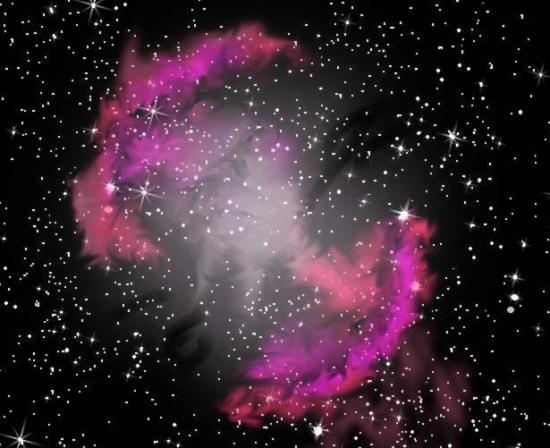BY LETTER
Protoplanetary and Planetary Nebula
 Image from Steve Bowers | |
| The Apple Nebula is a protoplanetary nebula that has formed in the last five thousand years in the rimward Outer Volumes, so is not yet visible from most of the Terragen Sphere. | |
Planetary Nebulae
An expanding shell of gas - actually the surface layers - ejected from a medium-mass star during its last stages of evolution at a rate of 20 to 30 km/sec, resulting in a circumstellar gas cloud that has spheroidal shape and often appears as a faint disk in telescopes or long-range scanners.The name is misleading, this kind of nebula has nothing to do with planets except for the rough resemblance to a planet's shape when seen at long range. With the result of the loss of surface layers, the white-hot interior of the star is exposed, which emits intense ultra-violet radiation. This ionizes the gas in the expanding shell, making it glow like a huge ring of fog a light year or more in diameter.
 Image from Steve Bowers | |
| The Dumbbell Nebula, a planetary nebula in Vulpecula that was at its brightest four thousand years ago | |
Planetary nebulae have an average lifespan of around 10,000 years: because of this, nearly all planetary nebula that were visible from pre-Expulsion Earth have faded away by the Current Era, and the few that remain are fainter or have changed shape and size significantly.
Protoplanetary Nebulae
A protoplanetary nebula or preplanetary nebula is the short-lived stage directly before the formation of a true planetary nebula. This comes between the late asymptotic giant branch phase and the subsequent planetary nebula phase. A protoplanetary nebula emits strongly in infrared radiation, and is a kind of reflection nebula, reflecting the light from the dying star at its centre.Protoplanetary nebulae should not be confused with protoplanetary disks, which form at the start of a star's lifespan from the material which will eventually coalesce into the planets and other material which will surround the star when it enters the main sequence.
Related Articles
Appears in Topics
Development Notes
Text by M. Alan Kazlev
Additional material by Steve Bowers
Initially published on 19 December 2001.
Updated April 2025
Additional material by Steve Bowers
Initially published on 19 December 2001.
Updated April 2025






